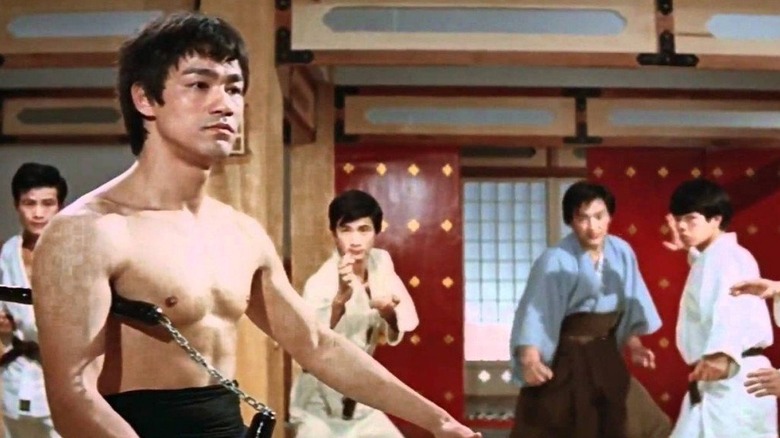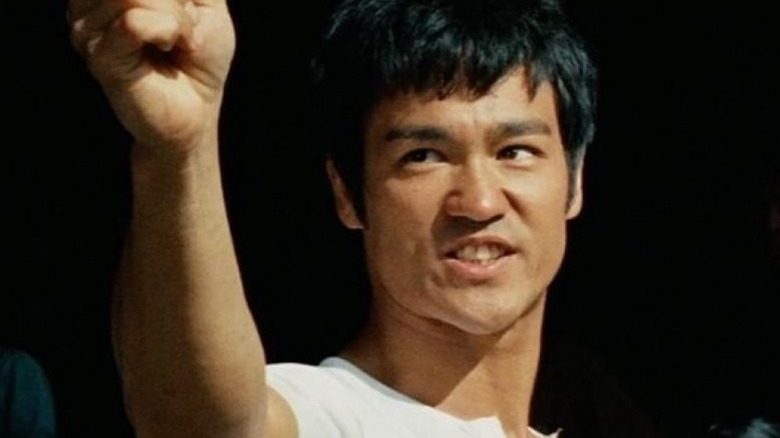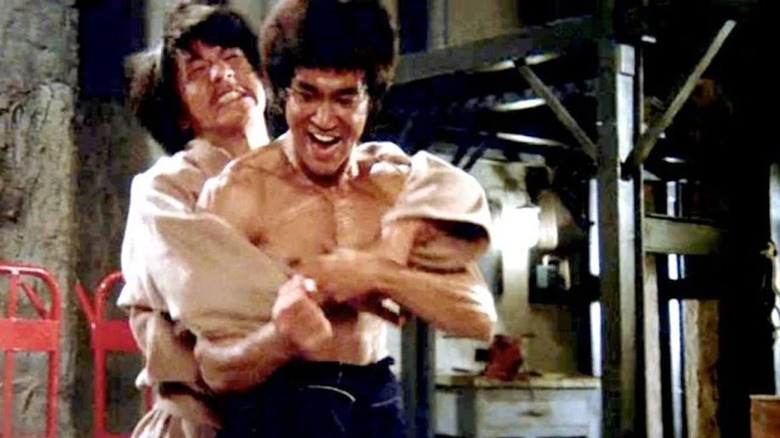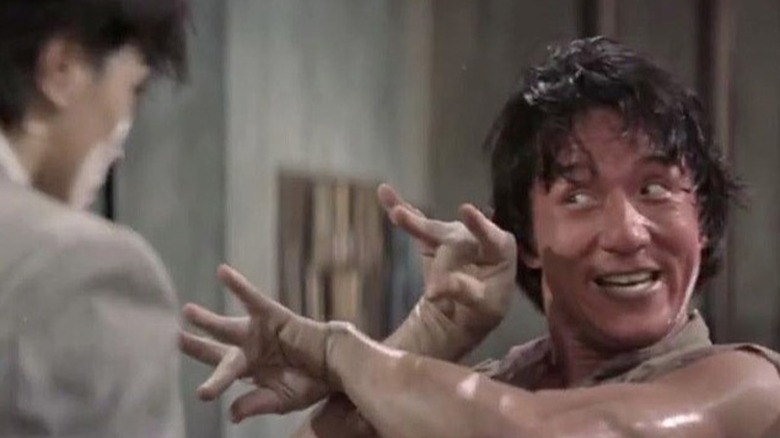How Bruce Lee Helped Jumpstart Jackie Chan's Career
Jackie Chan and Bruce Lee may have made very different movies, but they share a similar degree of global impact, each having been the face of Hong Kong cinema for stretches of time. It was Lee's few movies in Hong Kong, and tragic early death in 1973, that set the direction of the region's '70's action film output, and Chan's emergence as a star at the decade's tail end would mark a major change towards physical comedy. Despite their differences in approach, they shared a significant relationship: early in Chan's film career, he worked as a stunt double for Lee. He would use that experience as inspiration.
Lee's taciturn precision and elegance is a far cry from the loose, comical drunken master style of Chan. Lee derived his art from the styles of Ip Man, while Chan's descended from Buster Keaton. Even their movies' stories come from different worlds, as Lee used his work to emphasize a kind of warrior philosophy. The movies that Lee made in Hong Kong, the ones that made him a worldwide phenomenon, followed years of difficulty in Hollywood, where opportunities dried up quicker than they were offered.
Hollywood disappointments, Hong Kong beginnings
In the '60's, Lee's time in the United States saw him teaching martial arts to celebrities like Kareem Abdul-Jabbar and Steve McQueen. The connections forged by those lessons got Lee attention from film and television producers like Fred Weintraub, one of many looking to capitalize on the Kung Fu movies coming out of China.
Lee's sidekick role as Kato on television's "The Green Hornet" proved immensely popular in the U.S. and Hong Kong. With a number of sturdy business relationships, he anticipated a vehicle of his own. He needed work, but the industry in the late '60's was unwilling to commit to an Asian lead. Most of his roles came from television shows in need of a guest martial artist. Weintraub urged Lee to take the roles offered to him for movies in Asia, believing they could convince the American film industry to take a chance on him. Lee signed on to star in Lo Wei's "The Big Boss," to be filmed in Thailand. It was the first movie to emphasize his star power, charisma, and grace in full force.
Low-budget as they were, "The Big Boss" and its follow-up, "Fist of Fury," also directed by Lo Wei, ended up becoming major box office hits, the most successful to ever come out of Hong Kong at that point. The greatness came from tension on-set, with Lee picking fights with unimpressed stuntmen and his director. Jackie Chan, unknown stunt double, even saw Lo Wei cower behind his wife as Lee's temper flared up.
The Bruce Lee lookalikes
Those movies, immensely popular, forged Lee's reputation on the world stage. That he was only able to make a couple did little to diminish his impact — and that unknown stunt double, Jackie Chan, was the only man whose work in Hong Kong action cinema would rival Lee's in global influence.
Lee's death in 1973, when he was just 32 and at the peak of his powers as a performer and choreographer, robbed the world of a master. His absence was keenly felt by the Hong Kong film industry, who spent the rest of the '70's finding martial artists who kind of looked like Lee, changing their stage names, and recasting them in movies with titles like "Fists of Bruce Lee" (starring Bruce Li). Even Chan began his leading man work along these lines, before fully establishing his screen persona with "Drunken Master."
While Chan's first parts came as a young man in the films of the great King Hu, the stunt work he did with Lee in the early '70's was what really compelled him to embrace the art form. According to him, seeing "Fist of Fury" onscreen made him want to be a star.
From stuntman to star
In a 1997 interview with the South China Morning Post, Chan described his experience working with Lee in greater detail, revealing that Lee had a massive entourage and was intimidating to him as a young stunt double. But Lee was kind to him, getting him overtime on set and was, in general, "very good to the low class people." When Lee needed Chan to do a somersault for him, Chan did — and saw, with the final cut of "Fist of Fury," that his work as a stuntman had made Bruce Lee look even better.
He took pride in that, but had no more interest in being a stunt double, or making somebody else look better. He had a new desire to act, and "wanted to let people know it was me on the screen. I didn't want to be a double." And in Bruce Lee's final complete film, "Enter the Dragon," he got his wish, eschewing the stunt work in favor of playing random guards who get beat down. But at least you knew it was him.
That experience lit a fire under Chan played a huge role in his growth as a star. It gave him the tools and confidence to move the industry away from the Bruce Lee rip-offs with which it got enamored. Despite the world of difference between their styles, the two artists shared a unique degree of talent and innate charisma. Each of them rebuilt the culture in their own ways.



